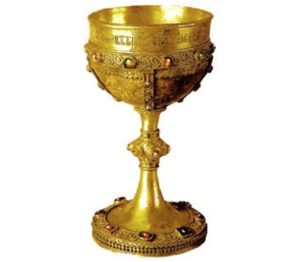
Thus far in our series on the Mingled Cup we have analyzed the ancient history of winemaking from the Greek, Roman, Jewish and early Christian perspectives. In those times it was typical to add water to “pure wine,” or merum, prior to consumption. Merum alone was too intoxicating and unpalatable to be served without the beneficial tempering effect of water. The resulting mixture was called “wine and water,” “wine with water,” “mingled wine,” or just “wine.” So commonly understood was the mixture of wine and water that early writers simply assumed that Jesus had turned water into “mixed wine” in the miracle at Cana (John 2:1-11), because it was common knowledge that nobody would have served straight merum at a wedding feast.
 Follow
Follow